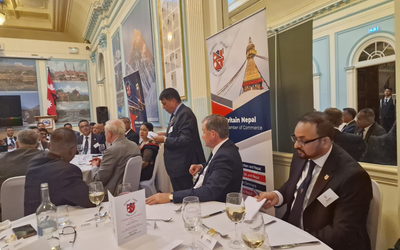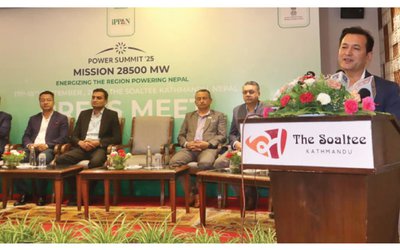More on Economy



Monetary policy for this fiscal year was recently made public by Nepal Rastra bank (NRB). Private sector has criticized some of the aspects of the monetary policy, but there are some positive aspects of the policy as well.
After the incomplete fiscal budget brought by the government, all eyes were set on the monetary policy. But as the lack of full-fledged budget has dashed the hopes for development up to a huge extent, the achievements of some of the targets of the monetary policy also look hugely suspicious.
NRB has targeted GDP growth rate at 5.5 percent while the inflation has been targeted to be 7.5 percent. But NRB has failed to maintain the inflation rate in the past, and it is highly doubtful that the inflation rate will only be limited to 7.5 percent at the current state, say economists.
The policy concentrates on financial stability, expanding access to finance, helping achieve economic growth and controlling inflation among others, said Governor Yuvaraj Khatiwada while presenting the policy.
Monetary policy targets Banking and Financial Institution (BFIs) deposit growth to 15.1 percent (Rs 1160 billion). It expects domestic credit growth to private sector at 16 percent.
Cash Reserve Ratio (CRR) has been increased to 6 percent for commercial banks, 5.5 percent to development banks, and 5 percent to finance companies. Earlier, it was 5 percent for all BFIs. The increment in CRR is to tackle the current surplus liquidity situation of the banks.
“Increase in CRR will help absorb some of the excess liquidity of banks,” said economist Bishwambher Pyakuryal. “It will also prevent high inflations as there is lack of effective means to use excess funds,” he added.
However, the interest rate is not going to come down like in the past due to increase in CRR and high operation costs of bank.
“If somebody is expecting rates to go down to 7-8 percent than it will not be possible and it should not be like that as well,” said Anil Gyawali, CEO of Nabil Bank.
But the private sector has been hoping for sharp reduction in interest rates. “Private sector has been expecting to get some relief in the form of interest rates reduction due to Monetary Policy measures,” said Pashupati Muraraka, Vice-president of the Federation of Nepalese Chambers of Commerce and Industry.
“The increase in CRR will increase cost of fund of the banks and financial institutions,” said Vice-president of Nepal Bankers Association Rajan Singh Bhandari.
The central bank also introduced ‘base rate’ of interest policy. The BFIs will now have to determine their interest rates on the basis of the base rate by using the method fixed by the central bank. BFIs will have to publish such base rates on a regular basis, according to the monetary policy. However, the introduction of interest-corridor has been limited only to talks.
The decision regarding the base rate has been taken to make the interest rate transparent and more competitive, according to Governor Yuva Raj Khatiwada.
“In a free economy, it is like turning back to fix the base rate and bring interest rate corridor. Those who believe in free economy want the interest rate to be determined by the market. It is better to have base rate than interest rate corridor. Governor has fixed the base rate only to remove unhealthy competition in interest rates and it should be controlled as well,” said Anil Gyawali.
In the case of agriculture and hydropower sector, monetary policy has reduced interest rates of refinancing to 6 percent from around 7 percent in the past. Meanwhile, the NRB is providing fund to banks and financial institutions (BFIs) at an annual interest rate of 6 percent which they will have to refinance at the rate not more than 9 percent.
Nepal Rastra Bank also provides lower rate refinancing facility to priority sectors and current NRB provision only allow to secure funds for six months.
“The sectors for which the facility is announced seek long-term investment. Central bank´s policy is useless, as no entrepreneur expresses eagerness to acquire such loans for a period of only six months," said Rajan Singh Bhandari, vice president of Nepal Bankers´ Association.
The bank rate has been increased to 8 percent from the current 7 percent.
For overseas travelers, foreign currency facility for each travel increased to US$2500 for public and US$5000 for entrepreneur. Earlier, there was a cap of US$5000 for a year.
Rastra bank has targeted to keep Forex reserve that will be able to finance 8 months of imports.



